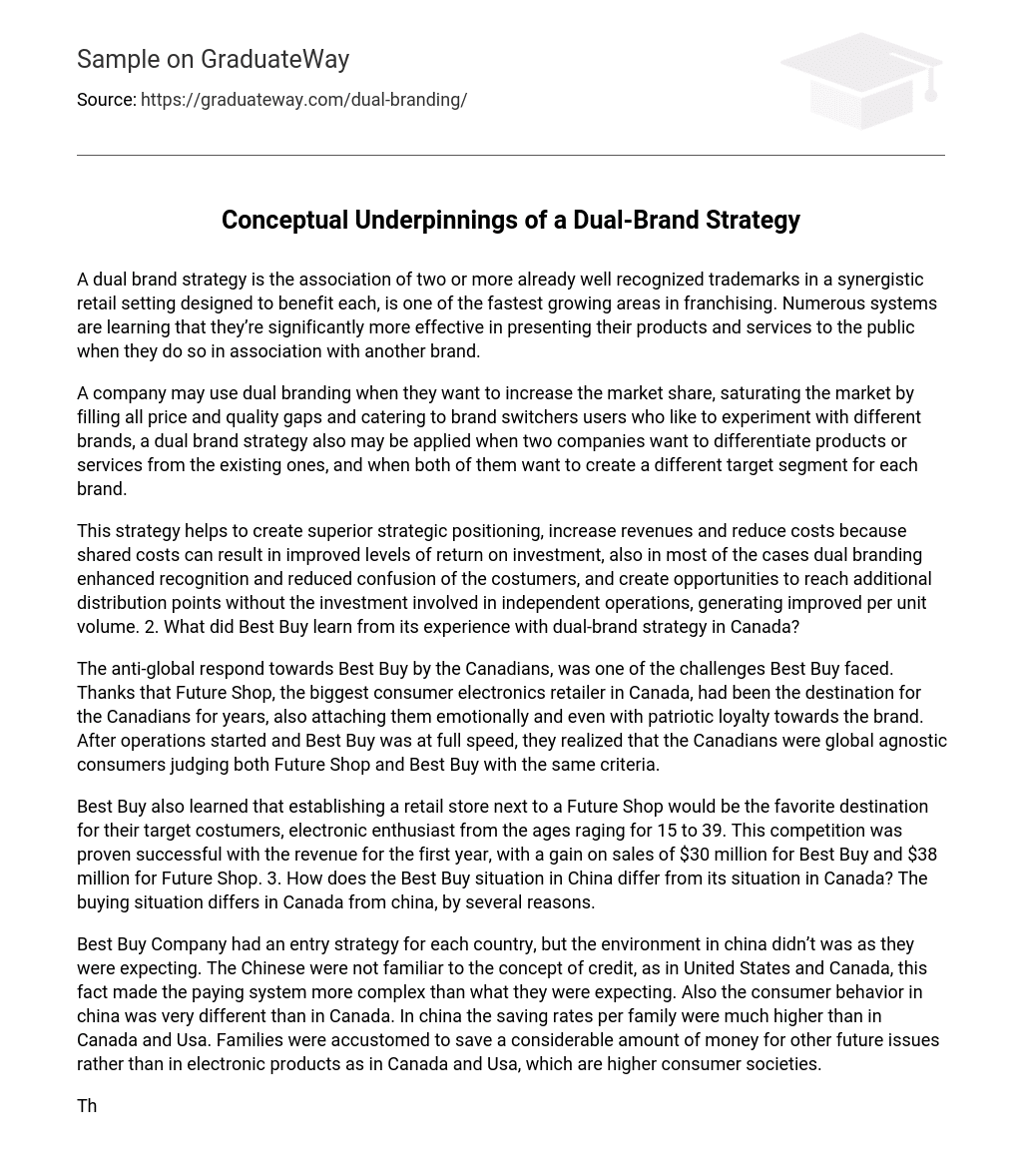The combination of two or more well-known trademarks in a retail setting, known as a dual brand strategy, is rapidly growing in franchising. Many systems have discovered that they are more successful in promoting their products and services to the public when they are associated with another brand.
A company may choose to implement dual branding in order to expand their market share. This involves targeting all price and quality gaps in the market and appealing to brand switchers who enjoy trying different brands. Dual branding can also be used by two companies to distinguish their products or services from others in the industry, and to create unique target segments for each brand.
This strategy has several benefits such as creating strategic positioning, increasing revenues, and reducing costs. Sharing costs can lead to higher return on investment. Dual branding often improves recognition and reduces confusion among customers. Additionally, it enables reaching more distribution points without the need for independent operations, resulting in improved per unit volume.
Best Buy learned valuable lessons from its experience with the dual-brand strategy in Canada.
The Canadians’ negative reaction to Best Buy, due to their anti-global sentiments, posed a significant challenge for the company. This was amplified by the fact that Future Shop, the largest consumer electronics retailer in Canada, had long been the preferred choice for Canadians, fostering an emotional connection and even patriotic loyalty to the brand. However, once Best Buy began its operations in Canada and gained momentum, it became clear that Canadian consumers evaluated both Future Shop and Best Buy using the same criteria.
Best Buy found that opening a retail store alongside a Future Shop would attract their desired customers, who are electronic enthusiasts aged between 15 and 39. This strategy proved successful, as Best Buy generated $30 million in sales revenue in the first year, while Future Shop earned $38 million. 3. What are the differences in Best Buy’s situation between Canada and China? The buying situation varies between Canada and China for several reasons.
Best Buy Company implemented an entry strategy for each country, but the outcome in China was not as expected. The Chinese population was not familiar with the concept of credit, unlike in the United States and Canada. This led to a more complex payment system than anticipated. Additionally, consumer behavior in China differed significantly from that in Canada. Chinese families had higher savings rates compared to those in Canada and the USA, with a tendency to save more for future purposes rather than spending on electronic products like in Canada and the USA, where consumerism is more prominent.
The process of entering the market in China was quite challenging for new businesses. Compared to developed countries, acquiring customers and establishing a presence in cities took significantly longer. Starting a new business in China was a time-consuming endeavor. Building relationships between different channels was slow due to the preference of manufacturers, distributors, and other parties to negotiate with familiar individuals. In China’s business landscape, personal relationships hold great importance. This process was influenced by various factors such as the government, channels, and income.
Purchasing habits varied among cities and were influenced by factors such as income levels. This led to differences in sales for the company depending on its location. Cultural differences also played a role, as the Chinese responded differently to messages compared to other countries. Unlike other consumers, brand preference did not necessarily translate into loyalty for the Chinese market. Price took precedence over brand name. As a result, Best Buy had to invest in point of sales promotion and merchandising techniques to influence the Chinese consumers’ final buying decision. Best Buy’s core competitive advantage lies in its previous experiences in the industry and its significant purchase in Canada. These experiences provide valuable insights for their expansion strategy; however, it is crucial to consider that markets operate differently due to various factors such as culture, oral traditions, politics, and behaviors. Therefore, an analysis of the target market’s behavior and suitability for a dual-brand strategy is imperative before expanding into new global markets.
Having a dual-brand can provide a competitive advantage, especially in markets where it makes sense. Investing in another brand that already has a market share can make the job easier for the firm, as they won’t have to spend as much on promotion. However, there are both advantages and disadvantages to this strategy. The advantages include increasing market share, filling all price and quality gaps, attracting brand switchers, and generating internal competition. On the other hand, there are disadvantages such as brand cannibalization, challenges in managing two different brands and splitting expenses, potential blurring of brand identity, and duplication of roles within the company.
Best Buy taking the risk of expanding all the way to China shows that for a company to succeed and survive, it needs to expand. A dual-brand strategy is a good choice to start with.
Bibliography:
- http://www.slideshare.net/idealajay/dual-branding
- http://www.holmeslofstrom.com/z_pdf/articles/franchise_operations/The%20Dual%20Branding.pdf
- http://prezi.com/caazpf19abys/best-buy-and-dual-branding-strategy/
- Best Buy Inc. – Dual Branding in China, Niraj Dawar; Ramasastry Chandrasekhar
[1] http://www.slideshare.net/idealajay/dual-branding





